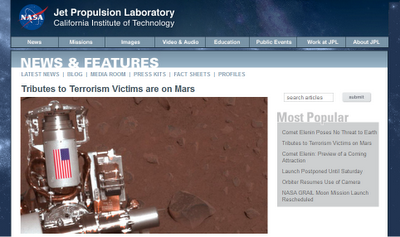Many of you have heard of OPEN NASA, billed by enlightened agency individuals as "A collaborative approach to open, direct and transparent communication about your space program."
As part of the greater Open Government Initiative, this entity's workforce strives to innovate on how the NASA does business by embracing new technologies and fostering "citizen engagement".

No easy trick in today's brutal political climate fueled by skeptics, but their earnest efforts reminds me of that old proverb: "Tell me and I forget. Show me and I remember. Involve me and I understand."
Conspiracy theorists especially welcome! But remember that your tinfoil hat boots the signal.

The important thing is to participate!
The program management official behind OpenNASA is Nicholas Skytland (who wrote what I consider to be one of the best space presentations ever) and the newest blog writers include Ali Llewellyn of (you may remember her from MissionX!) and Chris Gerty, crew member on NASA's undersea mission aboard the NOAA Aquarius.
Other fresh faces include William Eshagh and Sean Herron, who are now contributing articles about projects in the Open initiative, such as NASA Internships, Mars mapping, NEEMO, the Nebula story, events like space camps or World Space Week, and astronaut initiatives such as Fragile Oasis.
OpenNASA.com has moved to their new official site at http://open.nasa.gov/, which everyone should check out along with their sister-site http://data.nasa.gov/. This "Open Data Project" portion provides access to amazing NASA digitized datasets, which represents only a small-but-continually-growing body of knowledge captured in nearly 100 years of US aeronautics and space endeavors.

…But choose your forms of participation wisely
Open source software? Check. Open source summit? Check. They make a great team all around; everyone will enjoy first pieces of writing on the new site!
And I'm not just saying that because one of their awesome writers asked to interview me about my space flight simulation experiences... but of course, that didn't hurt, either. ;)
































